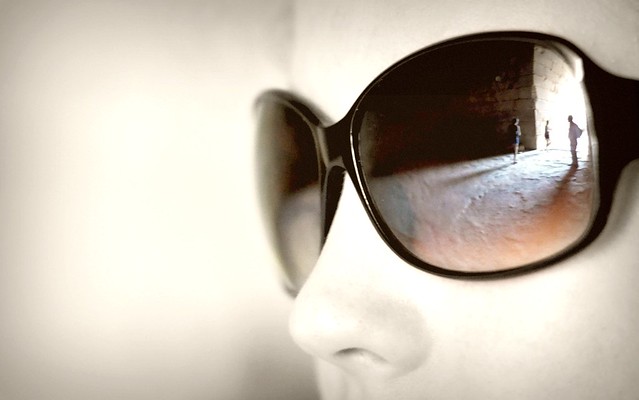 Many years ago when I was studying psychology, I was surprised to learn that seeing is much more than just the imprint of an image on the eye. Our eyes register what’s in front of us just like the camera film or sensor does, but we have to learn how to interpret that image. Seeing really happens in the brain - for one thing, the image that your eye records is actually upside down, and it's your brain that makes it appear the right way up. When researchers gave people glasses to wear that made everything seem upside down, within a week or so of continuous wearing, they were seeing the images as if they were upright. Once they took the glasses off, everything went upside down again because their brains had adapted.
Many years ago when I was studying psychology, I was surprised to learn that seeing is much more than just the imprint of an image on the eye. Our eyes register what’s in front of us just like the camera film or sensor does, but we have to learn how to interpret that image. Seeing really happens in the brain - for one thing, the image that your eye records is actually upside down, and it's your brain that makes it appear the right way up. When researchers gave people glasses to wear that made everything seem upside down, within a week or so of continuous wearing, they were seeing the images as if they were upright. Once they took the glasses off, everything went upside down again because their brains had adapted.There are fascinating accounts of people who’ve been blind from birth and have had their sight restored but still can’t ‘see’ properly. The shapes, the light and dark, the colours, are all there, but they simply don’t know what they mean. Michael May had his sight restored after being blind from the age of 3 and three years later still couldn’t identify faces – even that of his wife. When he first regained his sight he had to grapple with the difficulties of interpreting what he was ‘seeing’ and although he’d become an expert skier while blind – using a guide to give verbal instructions – he found he now had to close his eyes while ski-ing or what he saw became overwhelmingly confusing and dizzying.
We learn to use our sense of sight while very young, and like everything we learn young, it’s easy to get set in our ways and take things for granted. We don’t think about how we walk, for instance, unless something happens to us that means we have to learn how to walk all over again. Taking up photography is a little bit like this, in the sense that we have to learn how to see all over again, in a different way. The irony is that Michael May might well make a good photographer, because as photographers we have to try to forget about the object that we're photographing, and instead see it in terms of shapes and lines and light and colour and movement.
I love this photo by photo art heart - she's cleverly caught the scene in front of the viewer, and we might wonder how the person behind the sunglasses is really seeing it.
gilly of the camera points both ways
untitled by photo art heart


3 comments:
Love the inspiration for this post and the response. You never realize how powerful any of your senses-or any part of you is really-until they wander askew. Great thoughts.
Gilly, lots of interesting info here! The mind-eye connection is an amazing thing. While in college and painting some carnations, my prof told me to get the contours/silhouette right and the mind, with our acquired knowledge of the form of the object, won't need too much interior detail, as it "fills" in a lot of info. Just an aside, but something that has stuck with me to this day, which I find is relevant to photography also, when we consider the power of silhouettes.
Gilly, what a fascinating post! Sounds like something that Oliver Sacks might have written. i love your choice of pictures too as they make you think along with the post. Thank you. x
Post a Comment
thank you for visiting. take a moment and say hi!